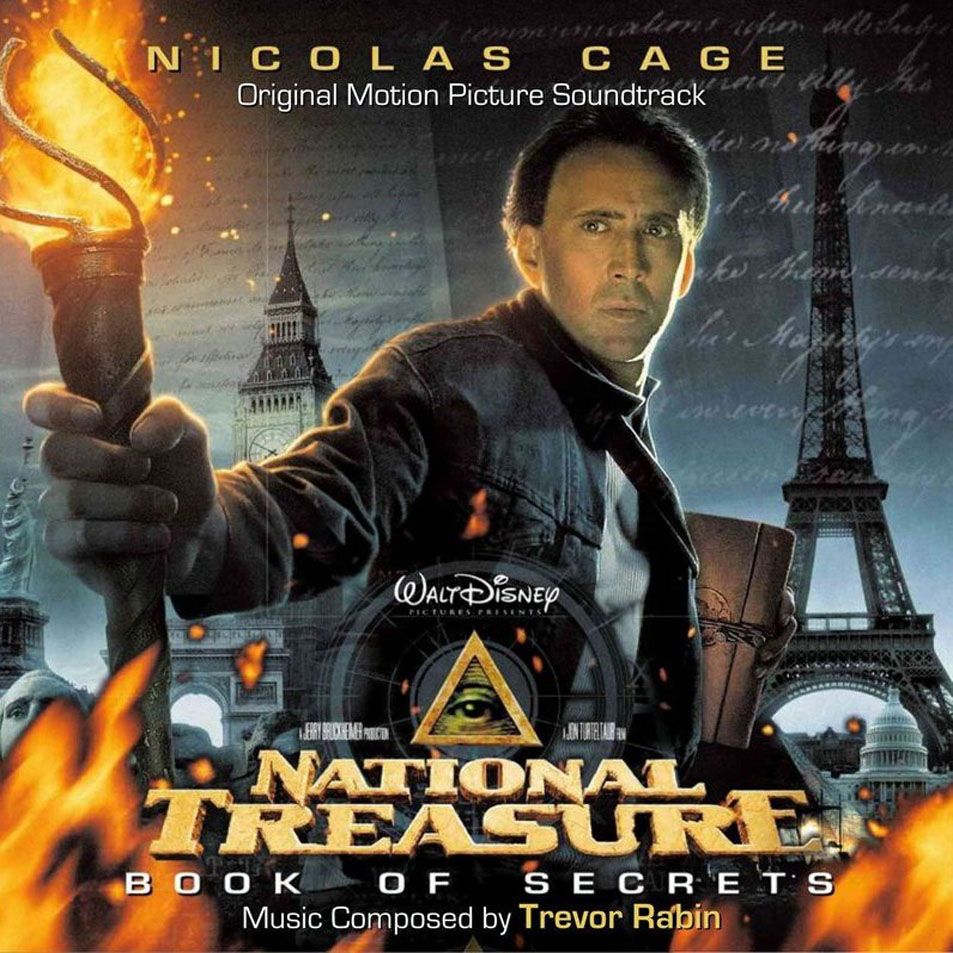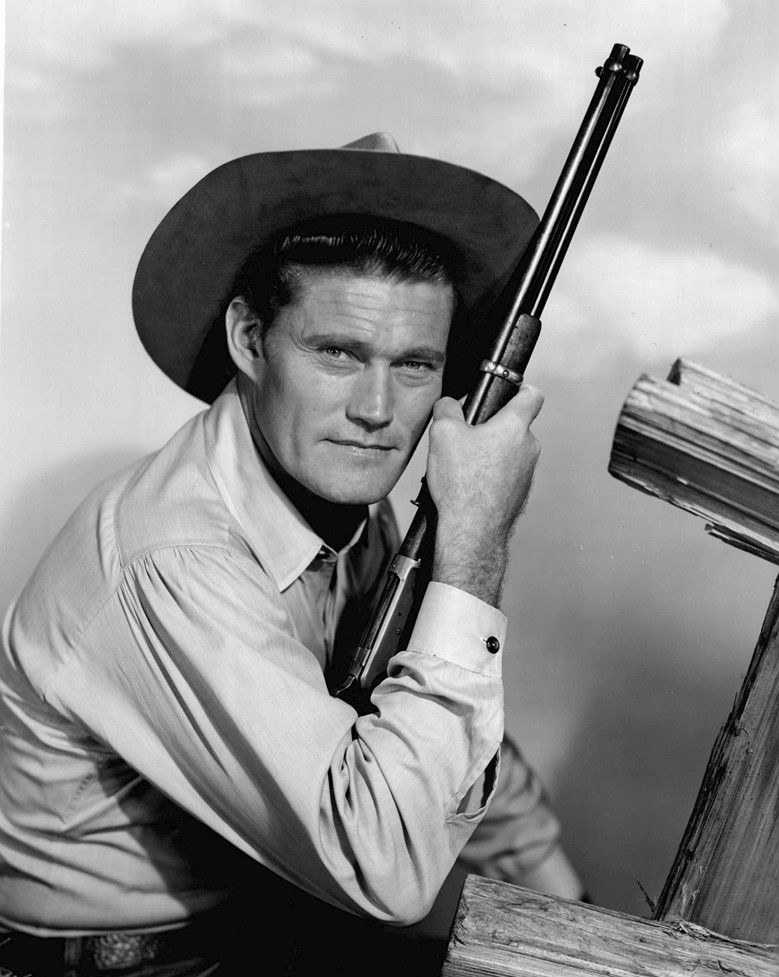
Chuck Connors, a name synonymous with rugged Western grit and the enduring image of the rifle-wielding Lucas McCain, carved an indelible mark on American popular culture. Before his iconic portrayal as the single-father rancher in the beloved television series “The Rifleman,” Connors lived a life rich with athletic prowess, wartime service, and a natural charisma that would eventually make him a household name. His journey from the sports arenas to the silver screen is a testament to his multifaceted talents and relentless pursuit of diverse passions.
Beyond the public persona and the memorable characters he brought to life, Kevin Joseph “Chuck” Connors was a man of considerable depth, whose personal story is as compelling as any role he played. This in-depth look explores the intricate tapestry of his early life, his remarkable professional sports career that predated his acting fame, and the crucial decisions that led him to Hollywood. Understanding these foundational experiences provides invaluable context to the man who would become one of television’s most recognizable figures.
It’s a narrative filled with ambition, unexpected turns, and a resilience that defined his trajectory, culminating in a legacy that resonates to this day. Join us as we delve into the extraordinary beginnings of Chuck Connors, tracing the path that shaped the individual behind “The Rifleman” and setting the stage for the later chapters of his influential life.

1. **Early Life and Heritage: From Brooklyn Roots to Athletic Promise** Kevin Joseph Connors was born on April 10, 1921, in Brooklyn, New York City, to Irish immigrant parents, Marcella and Alban Francis “Allan” Connors, from Newfoundland and Labrador. Raised as a devout Catholic, he served as an altar boy, reflecting his community and faith. His father became a U.S. citizen in 1914, working as a longshoreman, and his mother also attained citizenship in 1917, embodying a common immigrant story of the era.
From a young age, Connors was a devoted fan of the Brooklyn Dodgers, dreaming of one day joining the team despite their losing record in the 1930s. This early passion fueled his athletic ambitions. His talent was evident as he earned a scholarship to Adelphi Academy, graduating in 1939, and subsequently received offers from over two dozen colleges.
He ultimately chose Seton Hall University, where he excelled in both basketball and baseball, further solidifying his reputation as a gifted athlete. This period of collegiate distinction laid a robust foundation for his future endeavors, setting the stage for his remarkable professional sports career.
2. **The Origin of “Chuck”: How Kevin Joseph Became Chuck Connors** Kevin Joseph Connors disliked his given first name since childhood, actively seeking an alternative that better suited him. He experimented with nicknames like “Lefty” and “Stretch,” common in sports and reflective of his physical attributes, but neither truly stuck or captured his essence. His quest for a distinctive identity was an ongoing part of his early life.
The iconic nickname “Chuck” finally emerged during his time playing on Seton Hall’s baseball team. From his position on first base, Connors had a memorable habit of repeatedly yelling to the pitcher, “Chuck it to me, baby! Chuck it to me!” This enthusiastic phrase became his signature call on the field.
This repetitive and catchy exclamation was quickly picked up by his teammates and spectators, leading them to affectionately start calling him “Chuck.” The name, born from the diamond, perfectly encapsulated his energetic and straightforward personality, becoming synonymous with the man and remaining with him for the rest of his life.

3. **College Athletics and Early Professional Baseball: From Seton Hall to the Minors** Chuck Connors’ exceptional athletic performance at Seton Hall University in both basketball and baseball attracted professional attention. After two years, he made the significant decision to leave college and pursue a professional baseball contract, eager to fulfill his lifelong dream. This choice marked his formal entry into the competitive world of professional sports.
His professional baseball career commenced in 1940 with the Brooklyn Dodgers’ minor league team, the Newport Dodgers, where he played four games. After sitting out the 1941 season, he signed with the New York Yankees farm team, the Norfolk Tars, playing 72 games. These minor league stints provided essential experience, honing his skills in the demanding professional environment.
However, his budding career was interrupted by America’s entry into World War II. At the end of the 1942 season, on October 10, Connors enlisted in the United States Army at Fort Knox, Kentucky. This pause in his athletic endeavors saw him shift his focus to serving his country during a critical global conflict.
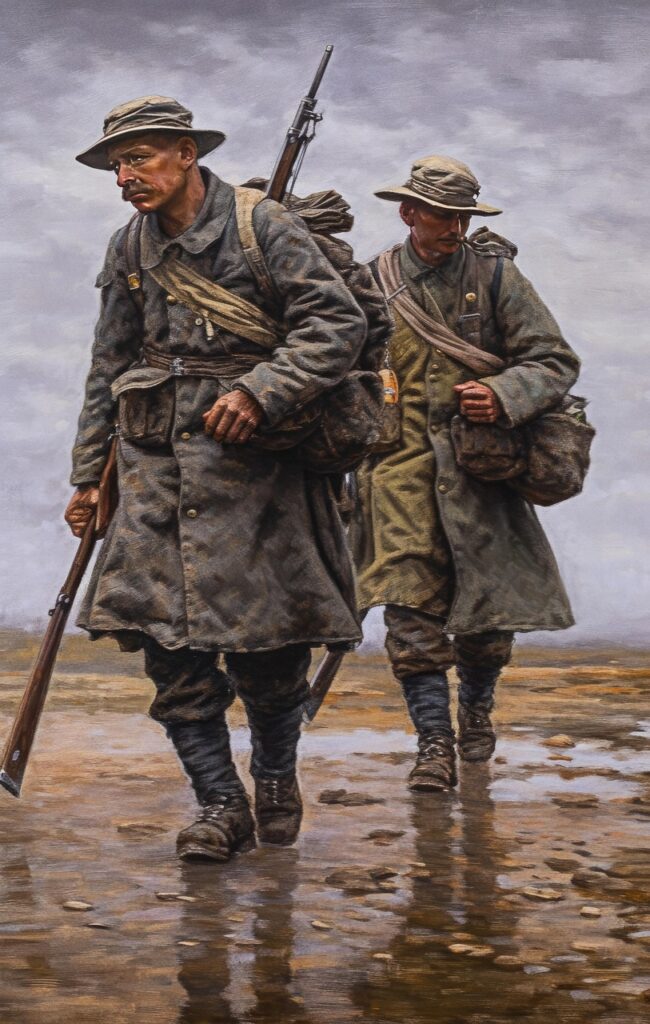
4. **World War II Service: A Patriot’s Contribution** Chuck Connors’ military service during World War II began in October 1942, interrupting his professional baseball aspirations. This commitment to national service exemplified the widespread patriotism of the era, as many talented individuals put their careers on hold to support the war effort. His transition from athlete to soldier was a significant chapter in his life.
For most of the war, Connors served as a tank-warfare instructor, initially at Fort Campbell, Kentucky, and later at West Point in New York. This crucial role highlighted his leadership abilities and capacity to teach complex skills, vital for preparing soldiers for combat. His commanding presence and clear instruction were valuable assets in these demanding positions.
His honorable discharge in 1946 marked the end of his wartime contributions, allowing him to return to professional sports. The discipline, resilience, and unique experiences gained during his time in the Army undoubtedly shaped his character, adding another dimension to his remarkable life story beyond the realms of sports and entertainment.

5. **Professional Basketball Trailblazer: From Rochester to the Boston Celtics** After his military discharge in 1946, the 6-foot-5-inch Chuck Connors made a swift and impactful return to professional sports, joining the Rochester Royals of the National Basketball League during their 1945–1946 championship season. This marked his official entry into professional basketball, showcasing his remarkable versatility as an athlete.
For the 1946–1947 season, Connors joined the newly formed Boston Celtics of the Basketball Association of America. His tenure with the Celtics, though brief, was historic. He became the first professional basketball player to break a backboard, a memorable feat achieved during pregame practice before the Celtics’ inaugural home game, with a shot rather than a slam dunk.
Connors played 53 games for Boston before leaving the team early in the 1947–48 season. His time with the Celtics cemented his place in basketball history, not just for the iconic backboard incident, but as a pioneer, being one of only 13 athletes to have played in both the National Basketball Association and Major League Baseball.

6. **Major League Baseball Endeavors: From Dodgers Prospects to Chicago Cubs First Baseman** Following his professional basketball career, Chuck Connors returned to baseball, attending spring training with the Brooklyn Dodgers in 1948. Although he didn’t make the Major League squad, he continued to play for their AAA team, the Montreal Royals, for two seasons, gaining valuable experience and refining his skills in the high-level minor leagues.
His persistence paid off, and Connors fulfilled a childhood dream by playing one game with the Brooklyn Dodgers in 1949, marking his official Major League Baseball debut. After two more seasons with Montreal, he joined the Chicago Cubs in 1951, where he saw more extensive action, playing in 66 games as a first baseman and occasional pinch hitter.
In 1952, Connors was sent back to the minor leagues to play for the Cubs’ top farm team, the Los Angeles Angels. This assignment near Hollywood proved serendipitous, as it was during this period that a pivotal encounter would begin to redirect his career path from the baseball diamond to the burgeoning world of acting, sensing the “twilight stage” of his baseball days.
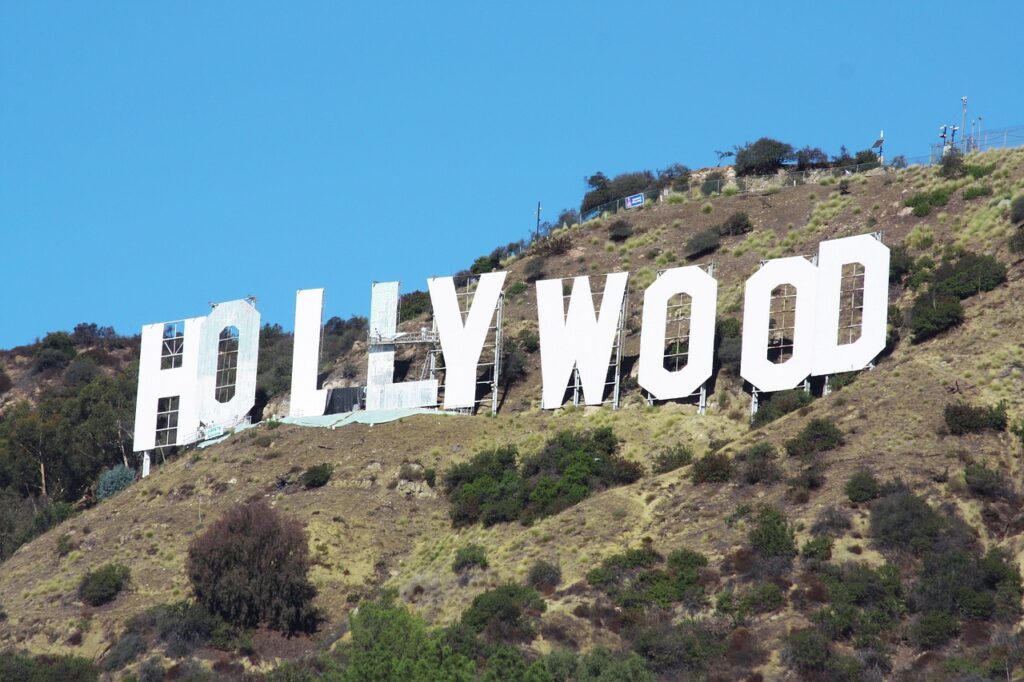
7. **The Pivotal Shift to Acting: From Diamond to Hollywood’s Spotlight** While playing for the Los Angeles Angels in 1952, Chuck Connors began to realize that his long-term future in professional baseball was limited. He openly acknowledged that his baseball career had “reached the twilight stage,” a frank assessment that paved the way for considering new opportunities outside of sports.
His proximity to Hollywood proved incredibly fortunate; an MGM casting director spotted him, leading to an offer that would fundamentally change his professional life. This chance encounter opened the door to the film industry, a stark departure from the athletic fields he had known.
Connors made his film debut in the 1952 Tracy–Hepburn film *Pat and Mike*, playing a police captain. This initial success solidified his decision to transition. In 1953, he officially retired from baseball, stating in a public letter that he had “decided to retire from professional baseball in favor of a career in motion pictures,” acknowledging baseball’s immense contribution to his film industry entrance. He quickly landed significant roles opposite Burt Lancaster in *South Sea Woman* and John Wayne in *Trouble Along the Way*, firmly establishing his new path.
Chuck Connors’ transition from the world of professional sports to the glitz of Hollywood was not just a career change; it was the genesis of a cultural icon. His unique blend of athletic grace and rugged charisma found its perfect embodiment in roles that resonated deeply with the American public. The following exploration delves into his acting triumphs, personal life, civic engagements, and the ultimate circumstances of his passing, painting a comprehensive picture of a man who truly lived a life less ordinary.

8. **The Iconic Role: Lucas McCain in ‘The Rifleman’**Chuck Connors’ most enduring legacy undoubtedly stems from his portrayal of Lucas McCain, the single-father rancher in the beloved ABC Western series, “The Rifleman.” This role was fiercely contested, with Connors besting 40 other hopeful actors to clinch the lead. A pivotal moment in this casting decision came when the show’s producers, from Four Star Television (including Dick Powell and David Niven), watched him in the Walt Disney film *Old Yeller*, where he played Burn Sanderson, a strong father figure. This viewing experience convinced them that Connors was the ideal choice, leading to a significantly improved offer that included a five-percent ownership stake in the show, a testament to their conviction in his abilities.
“The Rifleman,” which aired from 1958 to 1963, was an immediate sensation, ranking number four in the Nielsen ratings during its inaugural 1958–59 season, a remarkable achievement in a landscape dominated by Westerns. It broke new ground as the first show to feature a widowed father raising a young child, adding a layer of poignant family drama to the Western genre. Connors shared the screen with Johnny Crawford, an unfamiliar actor at the time but a former Mousketeer, who beat 40 other young stars for the role of Lucas’ son, Mark. Their on-screen chemistry as father and son became a cornerstone of the show’s success, resonating with audiences nationwide.
Lucas McCain’s trademark weapon, a customized Winchester rifle, became almost as famous as Connors himself. Three distinct rifles were made for the show: two identical .44–40 Winchester model 1892 rifles—one for on-screen use and a backup—and a Spanish version, an El Tigre, used in the saddle holster. Over the course of the series, the rifle levers were notably modified from the round type to a more distinctive D-shape, enhancing its iconic appearance. Connors himself had a deep connection to the weaponry; two personal rifles were custom-made for him by a fan, Maurice “Moe” Hunt, and were never used on the show. One of these treasured rifles was later gifted by Connors to his friend Arnold Palmer, the honorary chairman of his charity golf event, and was proudly displayed at The World Golf Hall of Fame. Connors famously stated in 1983, “My whole ability to make a living is derived from the fact that I was ‘The Rifleman,’” clearly acknowledging the profound and lasting impact the role had on his career and public identity.
.PNG/720px-The_Rifleman_(Mission).PNG)
9. **A Versatile Actor: Beyond ‘The Rifleman’ and Character Roles**While “The Rifleman” cemented Chuck Connors’ place in television history, his acting career was far more expansive, showcasing a remarkable versatility that stretched across film and numerous television guest appearances. His journey into acting truly began serendipitously in 1952 when, while playing for the Los Angeles Angels, an MGM casting director spotted him. This led to his film debut in the Tracy–Hepburn film *Pat and Mike*, where he played a police captain, marking a significant turn from the athletic fields. Following this, in 1953, he officially retired from baseball, acknowledging its role in opening doors to the film industry. He quickly landed prominent roles, starring opposite Burt Lancaster in *South Sea Woman* as a rebellious Marine private and with John Wayne as an American football coach in *Trouble Along the Way*.
Connors wasn’t afraid to embrace a range of characters, even delving into comedic territory. A rare instance of his lighter side was seen in a 1955 episode (“Flight to the North”) of *Adventures of Superman*, where he comically portrayed Sylvester J. Superman, a lanky rustic yokel who happened to share the title character’s name. His big-screen presence continued to grow with roles in notable films like the Walt Disney production *Old Yeller* (1957), *The Big Country* (1958) alongside Gregory Peck and Charlton Heston, *Move Over Darling* (1963) with Doris Day and James Garner, the dystopian classic *Soylent Green* (1973) co-starring Heston and Edward G. Robinson, and even the satirical comedy *Airplane II: The Sequel* (1982).
Beyond his major film and series roles, Connors became a beloved and ubiquitous television character actor, gracing dozens of shows with his distinctive presence. His guest-starring debut was on NBC’s *Dear Phoebe*, and he later appeared as the bandit Sam Bass in two episodes of Dale Robertson’s NBC Western *Tales of Wells Fargo*. His impressive list of television credits includes appearances on *Hey, Jeannie!*, *The Loretta Young Show*, *Gunsmoke*, *Wagon Train*, *The Millionaire*, *General Electric Theater* hosted by Ronald Reagan, *Murder, She Wrote*, *Night Gallery* hosted by Rod Serling, and a memorable turn as himself in *Here’s Lucy* with Lucille Ball. He also lent his voice and persona to hosting duties, including a number of episodes of *Family Theater* on the Mutual Radio Network, promoting prayer, and *Thrill Seekers*, a syndicated documentary on stunts, further showcasing his broad appeal.
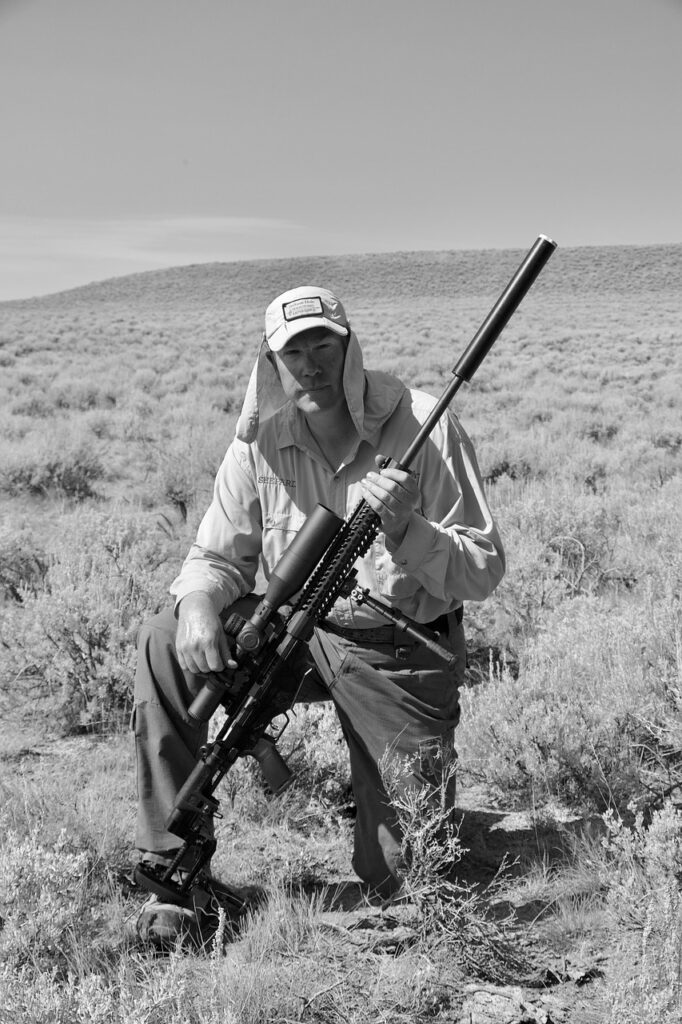
10. **Battling Typecasting: Post-‘Rifleman’ Series and Critical Acclaim**Following the immense success of “The Rifleman,” Chuck Connors found himself strongly typecast as the heroic, single-father rancher, a role that defined his public image. While deeply appreciated for the opportunities it provided, this typecasting often led to subsequent series struggling to find the same level of success or breaking new ground for the actor. He starred in several short-lived series in the years immediately following “The Rifleman’s” conclusion, including ABC’s *Arrest and Trial* (1963–1964), an early legal drama, and NBC’s post-Civil War-era series *Branded* (1965–1966), where he played the lead role of Jason McCord, a West Pointer trying to clear his name after being dismissed for supposed cowardice.
Despite the challenges of breaking free from his iconic image, Connors continued to take on varied television roles. From 1967–1968, he starred in the ABC series *Cowboy in Africa*, demonstrating his willingness to explore different settings and narratives. In later years, he continued to be a familiar face on television, appearing in series such as the critically acclaimed, though short-lived, NBC series *The Yellow Rose* (1983–1984), where he played Jeb Hollister, a patriarch in a modern Texas ranching family. He also had a recurring role as King Powers in the ABC series *Spenser: For Hire* (1985) and co-starred as the drifter Janos Skorzeny in the Fox series *Werewolf* (1987).
Perhaps one of his most significant acting achievements, and a powerful demonstration of his range against type, came in the form of his Emmy Award-nominated performance in the 1977 miniseries *Roots*. In this groundbreaking production, Connors took on the role of Tom Moore, a slave owner, a character starkly different from his heroic Lucas McCain persona. This portrayal not only earned him critical recognition but also proved his profound capabilities as a dramatic actor beyond the Western genre. In a delightful nod to his most famous role, Connors even reprised Lucas McCain in the 1991 TV movie *The Gambler Returns: The Luck of the Draw*, showcasing the enduring affection he had for the character that defined his career.

11. **Personal Life: Marriages and Family**Beyond the spotlight of Hollywood and the sports arenas, Chuck Connors led a rich personal life, marked by relationships and a deep connection to his family. He was married three times during his life. His first marriage was to Elizabeth Jane Riddell Connors, whom he met at one of his baseball games. They were married on October 1, 1948, and together they had four sons, forming the core of his family life. Despite the demands of his burgeoning career, Connors cultivated a “tremendous relationship” with his sons, a bond he cherished deeply, as he openly shared in later interviews.
His second marriage was to Kamala Devi in 1963, the year after they co-starred together in the film *Geronimo*. Their professional collaboration extended to other projects, as Devi also acted alongside Connors in series and films such as *Branded*, *Broken Sabre*, and *Cowboy in Africa*. This shared professional life likely contributed to their initial connection, though their marriage concluded in divorce in 1973. The complex dynamics of maintaining a personal life amidst a demanding public career were a recurring theme for many Hollywood figures of his era.
Connors met his third wife, Faith Quabius, when they both appeared in the 1973 science fiction film *Soylent Green*. They tied the knot in 1977, but this marriage, like his second, was relatively brief, ending in divorce in 1979. Despite the challenges of multiple marriages, his bond with his children remained paramount. One of his sons, Jeffrey, even had a small role as Toby Halperin in “Tension,” an episode of “The Rifleman,” offering a glimpse into the family’s involvement in his iconic work. Connors’ relationships, both personal and professional, reflect a man who navigated the complexities of fame with a clear dedication to those closest to him.
Read more about: Beyond the Spotlight: Unveiling the Unseen Truths and Troubled Soul of Marilyn Monroe’s Private Life

12. **Political Engagements and Diplomatic Encounters**Chuck Connors was not only a prominent actor but also a staunch supporter of the Republican Party, actively engaging in the political landscape of his time. He frequently attended fundraisers for U.S. President Richard M. Nixon’s campaigns, demonstrating his commitment to his political beliefs. His conservative stance extended to backing Barry Goldwater in the 1964 United States presidential election and Gerald Ford in the 1976 presidential election. Connors also campaigned for his personal friend, Ronald Reagan, further cementing his place within conservative political circles. In 1967, he visibly supported the Vietnam War, participating in marches that reflected his patriotic convictions and the broader political climate of the era.
One of the most remarkable and unexpected chapters of his life involved a moment of personal diplomacy with none other than Leonid Brezhnev, the leader of the Soviet Union. This unique encounter occurred in June 1973 when Brezhnev arrived on Air Force One with President Richard Nixon at El Toro Marine Corps Air Station. Brezhnev, spotting Connors in the receiving line, shook his hand, then famously wrapped his arms around the “Rifleman” and leapt into his arms, to the amusement and applause of the crowd. This extraordinary display revealed a surprising side of the Soviet leader, who, it turned out, was a massive fan of “The Rifleman,” one of the few American television programs permitted to be broadcast in the Soviet Union at that time.
Their immediate rapport deepened at a party hosted by Nixon at the Western White House in San Clemente, California, where Connors presented Brezhnev with a pair of Colt Single Action Army “Six-Shooters,” which Brezhnev greatly admired. Their bond was such that Connors accepted an invitation to visit the Soviet leader in Moscow in December 1973. Following Brezhnev’s death in 1982, Connors expressed a desire to return to the Soviet Union for the General Secretary’s funeral, but the U.S. government, for reasons not specified, did not permit him to be part of the official delegation. Despite opportunities and suggestions from friends, Connors ultimately demurred from running for political office himself, humorously stating that “being around so many politicians, I became a little cynical about politicians in general.”
Read more about: Royal Brooches: A Glimmering Legacy – 10 Iconic Adornments That Defined Eras and Sparkled in Court

13. **Philanthropy and Recognition**Beyond his achievements in sports and acting, Chuck Connors was a man with a generous spirit, dedicating his time and influence to philanthropic endeavors. He hosted the annual Chuck Connors Charitable Invitational Golf Tournament through the Chuck Connors Charitable Foundation. This event was not merely a social gathering; it was a significant fundraiser, with all proceeds directed to the Angel View Crippled Children’s Foundation. Through his consistent efforts and the success of the tournament, Connors helped raise over $400,000, making a tangible difference in the lives of many children and demonstrating his heartfelt commitment to giving back to the community.
Connors’ contributions to entertainment were officially recognized on July 18, 1984, when he was awarded a star on the prestigious Hollywood Walk of Fame. The star, located at 6838 Hollywood Blvd, was celebrated with a ceremony attended by over 200 close friends and family, including his co-star from “The Rifleman,” Johnny Crawford. This honor was a deeply emotional moment for Connors; famously, the tough-guy hero and villain was moved to tears when he received his star, a powerful testament to the significance of the recognition in his life and career. This public acknowledgment underscored his lasting impact on the film and television industry.
Further cementing his legacy, Connors was inducted into the Western Performers Hall of Fame at the National Cowboy & Western Heritage Museum in Oklahoma City in 1991. This accolade specifically honored his iconic contributions to the Western genre, particularly through “The Rifleman,” acknowledging his profound influence on how the American West was portrayed in popular culture. Interestingly, his generosity extended even to the sports world, as he played an off-field role in 1966 by acting as an intermediary to help end the celebrated holdout by Los Angeles Dodgers pitchers Don Drysdale and Sandy Koufax, showcasing his diverse influence and willingness to assist in different spheres.
Read more about: The Final Chapter: ‘Ketamine Queen’ Jasveen Sangha’s Guilty Plea in Matthew Perry’s Tragic Death

14. **Final Chapter: Illness and Legacy**On November 10, 1992, the world lost a beloved figure with the passing of Chuck Connors. He died at the age of 71 from lung cancer at Cedars-Sinai Medical Center in Los Angeles, where he had been hospitalized for the preceding week. His passing marked the end of an extraordinary life that seamlessly blended professional athletics, wartime service, and a celebrated career in acting. He was laid to rest at San Fernando Mission Cemetery, a final resting place for many figures from the entertainment industry, marking the conclusion of his physical journey.
At the time of his death, Connors resided on a ranch in Tehachapi, California, north of Los Angeles, a setting that perhaps echoed the Western landscapes he so famously inhabited on screen. His final years found him at peace, having reflected on his life with a philosophical outlook. In an interview nine years before his passing, he expressed contentment: “My life is pretty good now. I’ve had my bumps along the way, personally. But I’ve got a tremendous relationship with my four sons, have four or five very good friends and a lot of nice acquaintances. I have a nice ranch, pretty good health and I don’t ever have to work again.”
Chuck Connors’ legacy is multifaceted and enduring. He remains one of only 13 athletes in American professional sports history to have played in both the National Basketball Association and Major League Baseball, a testament to his rare athletic gifts. However, it is his iconic role as Lucas McCain, “The Rifleman,” for which he is most fondly remembered—a character whose strong moral compass and fast-cocking Winchester rifle became emblematic of the Western hero. His ability to transition from a two-sport professional athlete to a versatile and beloved actor, leaving an indelible mark on television and film, ensures that his story will continue to captivate and inspire, reminding us of a life lived with passion, resilience, and a distinctive charm that continues to resonate decades after his passing.
Read more about: Richard Gere’s Historic Connecticut Estate Demolished: Unpacking the Backlash, Salvage Efforts, and the Star’s Spanish Relocation
Chuck Connors was more than just an actor or an athlete; he was a living embodiment of the American spirit, a man who pursued his passions with unwavering dedication, leaving behind a legacy that is both inspiring and deeply human. His journey from the Brooklyn sandlots to the Hollywood Walk of Fame is a testament to the power of diverse talents and the enduring appeal of a genuine character, both on and off the screen.


